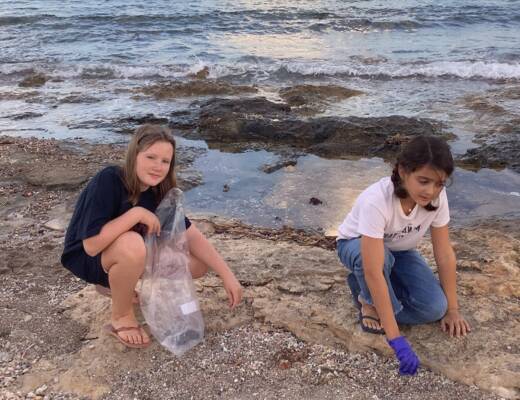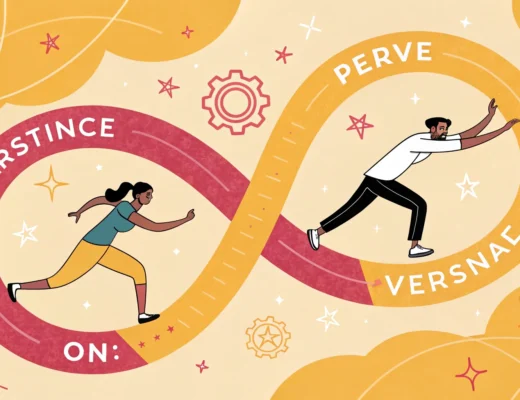Ever wondered how many baby steps are there in Dave Ramsey’s plan to financial freedom? Well, it’s seven, and they’re all about getting your money in order without making it overly complicated. From setting up a small emergency fund to paying off your house early, each step builds on the last. It’s a straightforward approach that many people have found success with, even if it doesn’t fit everyone’s needs perfectly. Let’s break down these steps and see how they can help you take control of your financial future.
Key Takeaways
- Dave Ramsey’s 7 Baby Steps offer a clear path to financial stability.
- The plan starts with saving a $1,000 emergency fund.
- Using the debt snowball method, you can tackle debts one by one.
- Investing 15% of your income is a key component of the steps.
- Building wealth and giving back is the ultimate goal of the plan.
Understanding The Baby Steps Journey
The Importance Of Financial Planning
When I first stumbled upon Dave Ramsey’s Baby Steps, I was skeptical. I mean, how could something so simple be the answer to financial freedom? But here’s the thing: financial planning is the backbone of these steps. Without a plan, it’s like setting off on a road trip without a map. You’ll end up somewhere, but it might not be where you wanted. The Baby Steps give you a clear path to follow. It’s about knowing where your money’s going, so you can tell it where to go. Think of it as your financial GPS.
How Each Step Builds On The Last
The beauty of the Baby Steps is how they interlock like pieces of a puzzle. Each step lays the groundwork for the next. For instance, saving a $1,000 starter emergency fund gives you a cushion while you tackle your debt. Once that’s in place, you’re ready to throw everything at your debts using the debt snowball method. It’s like building a house; you can’t start with the roof. You need a solid foundation first.
Common Misconceptions About The Steps
I remember talking to a friend who thought the Baby Steps were just another financial fad. But that’s a common misconception. Some people think these steps are too rigid or only work if you follow them perfectly. The truth is, they’re flexible enough to fit your life. You don’t have to be perfect; you just have to be consistent. Another myth is that you can only focus on one step at a time. While that’s the ideal, life isn’t always that neat. Sometimes you have to juggle. But having a clear sequence helps keep your priorities straight. It’s about progress, not perfection.
Starting With An Emergency Fund
Why You Need A Starter Fund
I remember when I first heard about the idea of an emergency fund. Honestly, it felt like a safety net I didn’t know I needed. Life is unpredictable, and having that financial cushion can be a real game-changer. Think of it as your first line of defense against unexpected expenses, like car repairs or sudden medical bills. Without it, you’re more likely to fall into debt when life throws a curveball.
Tips For Saving Your First $1,000
Getting to that first $1,000 might seem daunting, but it’s totally doable with some simple strategies:
- Automate Your Savings: Set up an automatic transfer from your checking account to a savings account every payday. This way, you’re saving without even thinking about it.
- Cut Unnecessary Expenses: Look at where your money is going. Maybe skip that daily coffee run or cancel unused subscriptions.
- Sell Unused Items: Got stuff lying around you don’t use? Sell it online. It’s a great way to declutter and boost your savings.
Melanie Hanson, an editor-in-chief, wisely pointed out that it’s better to save what you can comfortably manage than to overstretch and give up.
The Role Of Emergency Funds In Financial Health
An emergency fund isn’t just about covering surprise expenses. It’s about peace of mind. Knowing you have a financial buffer can reduce stress and help you focus on other financial goals, like paying off debt or investing. It’s like having a financial security blanket. Plus, establishing an emergency fund ensures you’re not relying on credit cards or loans, which can lead to a cycle of debt.
In short, starting with an emergency fund is about building a solid foundation for your financial future. It’s the first step in taking control of your money and your life.
Tackling Debt With The Snowball Method
What Is The Debt Snowball?
The debt snowball method is a strategy where you focus on paying off your smallest debts first. The idea is simple: you list all your debts, from the smallest to the largest, and start attacking the smallest one with everything you’ve got. Pay only the minimum on your other debts while you concentrate on getting rid of the smallest. Once that debt is gone, you move on to the next smallest, and so on. This method gives you quick wins that can boost your motivation to keep going.
Steps To Implement The Snowball Method
- List Your Debts: Start by writing down all your debts except for your mortgage. Arrange them from the smallest balance to the largest.
- Make Minimum Payments: Pay the minimum on all your debts except the smallest.
- Attack the Smallest Debt: Throw every extra dollar you can find at the smallest debt until it’s gone.
- Repeat: Once a debt is paid off, move on to the next smallest, adding the amount you were paying on the previous debt to this one.
Benefits Of Paying Off Small Debts First
Paying off small debts first might seem counterintuitive because it doesn’t focus on interest rates, but it has its benefits. First, it gives you quick wins, which can be a huge psychological boost. It feels great to knock out a debt, no matter how small. Plus, as each debt is paid off, you free up more money to put towards the next one. This "snowball" effect can create a powerful momentum, helping you stay motivated and committed to becoming debt-free.
Also, tackling smaller debts first helps build discipline and financial habits that can keep you from falling back into debt. It’s like training wheels for your financial journey, giving you confidence to handle bigger challenges later on.
One thing to keep in mind, though, is to avoid taking on new debts during this process. It’s tough to make progress if you’re adding more to your plate. And if you’re dealing with something like student loans, remember they can be a long-term burden that needs careful handling. This method is about changing behavior, not just numbers, and those small victories can lead to big changes.
Building A Robust Emergency Fund
How Much Should You Save?
When it comes to building a solid emergency fund, the big question is: how much should you actually save? Experts often suggest saving enough to cover three to six months of your living expenses. Think about your rent, groceries, utilities, and other essentials. If you’re in a single-income household, aiming for six months might be wise. For dual-income families, three months might be enough. It’s all about having a cushion to fall back on when life throws a curveball.
Strategies For Growing Your Fund
Growing an emergency fund can seem daunting, but breaking it down into smaller steps makes it manageable. Here’s what worked for me:
- Automate Your Savings: Set up an automatic transfer from your checking account to a savings account. This way, you save without even thinking about it.
- Cut Unnecessary Expenses: Go through your monthly bills and find stuff you can live without. Maybe it’s that gym membership you never use or those streaming services you barely watch.
- Sell Unused Items: I once sold a bunch of old gadgets and clothes online. It’s surprising how much you can make from stuff just lying around.
When To Use Your Emergency Fund
Knowing when to dip into your emergency fund is crucial. This fund isn’t for impulse buys or vacations. It’s for true emergencies, like:
- Losing your job and needing to cover expenses while you find a new one.
- Unexpected medical bills that insurance doesn’t cover.
- Major car repairs that you can’t avoid.
Having this fund is like having a financial safety net. It helps you handle the unexpected without going back into debt. Remember, once you use it, make a plan to replenish it as soon as possible. It’s all about staying prepared and secure.
Investing For Your Future
Understanding Retirement Accounts
When it comes to planning for the future, knowing the ins and outs of retirement accounts is key. These accounts, like 401(k)s and IRAs, are designed to help you save money over time. The earlier you start, the better off you’ll be. I remember when I first opened my 401(k) at work. It felt like a big step, but I knew it was important. The money you put in grows tax-free, which means more money for you when you retire.
How To Invest 15% Of Your Income
A good rule of thumb is to invest 15% of your income in retirement. It might sound like a lot, but breaking it down helps. Start by contributing to your employer’s 401(k) plan, especially if they match your contributions. That’s free money you don’t want to miss. If you still have more to invest, consider a Roth IRA. The key is consistency. Every month, like clockwork, I make sure to put aside that 15%. It’s a habit now, and it feels good knowing I’m building a secure future.
The Power Of Compound Interest
Compound interest is like magic for your money. It’s when the interest you earn also earns interest. Over time, this can significantly boost your savings. Imagine planting a tiny seed that grows into a big tree. That’s what compound interest does for your investments. I used to think saving a little here and there wouldn’t make a difference, but seeing my account grow over the years changed my mind. Watching your money work for you is one of the most rewarding parts of investing.
Planning For Your Children’s Education
Choosing The Right Savings Plan
Planning for your kid’s education can feel like a big puzzle. But starting early makes a huge difference. I remember how overwhelming it seemed at first, but breaking it down into steps made it manageable. One of the best ways to save is through a 529 College Savings Plan or an Educational Savings Account (ESA). These accounts are designed to help your money grow tax-free, which is a big bonus. But remember, it’s crucial to educate children about managing affluence to ensure they understand the responsibility that comes with these funds.
The Importance Of Early Savings
Starting to save when your kids are young can save you a lot of stress later on. I started putting away small amounts each month when my son was born. It didn’t seem like much at first, but over time, it really added up. By the time he was ready for college, we had a nice cushion. The earlier you start, the more you can take advantage of compound interest, which is like free money growing on your money!
Avoiding Student Loan Debt
Student loans can be a heavy burden. I’ve seen friends struggle with loan payments long after graduation. To help your kids avoid this, encourage them to apply for scholarships and grants. Also, consider more affordable education options like community colleges for the first two years. By planning ahead and saving, you can help your kids graduate without that weight on their shoulders. It’s all about giving them a strong start without the debt dragging them down.
Paying Off Your Home Early
Strategies For Accelerating Mortgage Payments
Paying off your home early can seem like a huge task, but breaking it down into smaller actions makes it manageable. One thing I learned is to make extra payments directly towards the principal. Even a few hundred dollars extra each month can chop years off your mortgage. Consider making one extra mortgage payment each quarter. This method can potentially save you thousands in interest over the life of the loan.
Another strategy is to refinance your mortgage. This could lower your interest rate and shorten your loan term, which means less interest paid overall. But remember, refinancing comes with its own costs, so weigh the pros and cons carefully.
Benefits Of Being Mortgage-Free
Imagine life without a monthly mortgage payment. That’s a reality when you pay off your home early. Not having that bill each month gives you financial freedom to focus on other goals, like retirement or travel. It also provides peace of mind knowing that your home is truly yours.
Being mortgage-free can also help in emergencies. Without a mortgage, there’s less financial pressure if you face unexpected expenses. Plus, it’s a great feeling to know you have a significant asset that’s fully paid off.
What To Do After Paying Off Your Home
Once your mortgage is gone, it’s time to think about what’s next. You’ll have extra cash each month, and it’s important to use it wisely. Consider boosting your retirement savings or investing in other areas.
Also, think about ways to save money daily, like cutting down on small expenses. This can help you build your savings even more. And don’t forget about giving back. With fewer financial obligations, you might find it rewarding to support causes you care about or help out family and friends.
Paying off your home early is a big step, but it opens up a world of possibilities. It’s not just about the money saved—it’s about the freedom and opportunities that come with it. So, take it one step at a time, and remember, every little bit helps!
Creating Lasting Wealth And Giving Back
The Importance Of Wealth Building
Building wealth isn’t just about stacking dollars in a bank account—it’s about creating a financial foundation that lets you live life on your terms. Imagine being able to retire comfortably, travel, or support your family without financial stress. That’s what wealth building is all about. It’s not just for the super-rich; anyone can start building wealth by consistently investing a portion of their income. For example, investing 15% of your income in growth stock mutual funds, as Dave Ramsey suggests, can set you on a path toward financial security. The key is to start early and be consistent.
Ways To Give Back To Your Community
Once you’ve built a solid financial base, giving back becomes not only possible but rewarding. You can support local charities, volunteer your time, or even start a scholarship fund. Here are a few ideas:
- Donate regularly to a cause you care about.
- Volunteer at local shelters or community centers.
- Start a community project, like a garden or a reading program.
Giving back doesn’t always mean money; sometimes, your time and skills are even more valuable.
Maintaining Financial Health After Success
Even after achieving financial success, it’s important to keep good habits. Continue budgeting, saving, and investing wisely. Remember, financial health isn’t just a one-time achievement—it’s a lifestyle. Keep your goals in check, and don’t forget to enjoy the fruits of your labor. Whether it’s taking a family vacation or pursuing a new hobby, make sure you balance saving with living. And always keep an eye on your investments to ensure they’re aligned with your goals.
In the end, creating wealth and giving back are two sides of the same coin. They both lead to a fulfilling life where you can thrive and help others do the same.
Frequently Asked Questions
What are Dave Ramsey’s 7 Baby Steps?
Dave Ramsey’s 7 Baby Steps are a series of actions to help you save money, pay off debt, and build wealth. They are designed to guide you toward financial stability.
Why is it important to start with a $1,000 emergency fund?
Starting with a $1,000 emergency fund helps you cover unexpected expenses without going into debt. It’s the first step to taking control of your finances.
How does the debt snowball method work?
The debt snowball method involves paying off your smallest debts first while making minimum payments on larger ones. This strategy builds momentum as you eliminate each debt.
Why should I invest 15% of my income for retirement?
Investing 15% of your income ensures you have enough savings for retirement. It helps you build a secure future by taking advantage of compound interest.
What is the benefit of paying off your home early?
Paying off your home early means you own it outright, freeing up money for other goals. It reduces financial stress and increases your financial freedom.
How can I save for my children’s education?
You can save for your children’s education by using a 529 plan or an education savings account. These options allow you to set aside money specifically for college costs.







